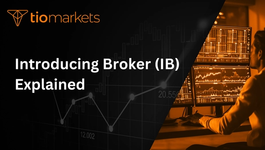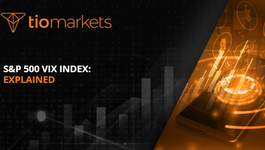Collateral: Explained | TIOmarkets
BY TIOmarkets
|June 27, 2024In the world of trading, the term 'collateral' holds a significant place. It is a fundamental concept that every trader, novice or experienced, must understand to navigate the complex landscape of financial markets. This article aims to provide a comprehensive understanding of what collateral is, its types, its importance in trading, and much more.
Collateral refers to an asset or group of assets that a borrower offers to a lender as security for a loan. If the borrower defaults on their loan payments, the lender can seize the collateral and sell it to recoup their losses. In the context of trading, collateral is used to secure a position or trade.
Understanding Collateral in Trading
In trading, collateral is often used in margin trading, where it serves as a guarantee for the borrowed money used to buy securities. This form of trading allows traders to leverage their positions, meaning they can trade with more money than they actually have in their account.
However, this also means that traders are taking on more risk. If the market moves against their position, they could lose more than their initial investment. This is where collateral comes into play. The collateral acts as a safety net for the broker, ensuring they will be able to recover their funds if the trade goes bad.
Role of Collateral in Margin Trading
Margin trading is a method of trading assets using funds provided by a third party. When compared to regular trading, margin trading offers the potential for greater returns, but with the increased potential for higher losses. Collateral is a key component of margin trading as it provides security for the lender.
When you engage in margin trading, you are essentially borrowing money from your broker to purchase more assets than you could with just your available funds. The collateral, which is usually the assets in your trading account, is used to secure this loan. If the trade goes against you, the broker has the right to sell these assets to cover the losses.
Types of Collateral in Trading
Various types of assets can be used as collateral in trading. The most common type is cash, but other assets like stocks, bonds, real estate, and even other commodities can also be used. The type of collateral accepted will depend on the broker and the specifics of the trade.
When using non-cash assets as collateral, it's important to understand that the broker will typically only accept them at a discounted value. This is because these assets can fluctuate in value, and the broker needs to ensure they will still be able to cover their losses if the value of the collateral decreases.
The Importance of Collateral in Trading
Collateral plays a crucial role in trading, particularly in risk management. By providing a form of security, it protects both the trader and the broker from potential losses. For the trader, it allows them to leverage their positions and potentially earn higher returns. For the broker, it provides a form of insurance against the trader defaulting on their loan.
Without collateral, many trading strategies would not be possible. For example, short selling, where a trader borrows shares to sell in anticipation of a price drop, relies heavily on collateral. The trader uses the shares as collateral to secure the loan from the broker. If the price of the shares increases instead of decreasing, the broker can sell the collateral to cover their losses.
Risk Management and Collateral
Effective risk management is crucial in trading, and collateral plays a key role in this. By providing a safety net, it allows traders to take on more risk in the hope of achieving higher returns. However, it's important for traders to understand that while collateral can help manage risk, it does not eliminate it.
Traders must always be aware of the potential for loss, particularly when using leverage. If the market moves against their position, they could lose more than their initial investment. Therefore, it's crucial to have a solid risk management strategy in place, which includes understanding how much you're willing to risk and setting stop-loss orders to limit potential losses.
Collateral and Leverage
Leverage is a powerful tool in trading, allowing traders to amplify their trading position. It's essentially a loan provided by the broker, allowing the trader to open a position larger than their own capital. Collateral is what makes leverage possible.
When a trader uses leverage, they are essentially borrowing money from their broker. The collateral, usually the assets in the trader's account, is used to secure this loan. If the trade goes against the trader, the broker can sell the collateral to recover their funds. Therefore, understanding collateral is crucial when trading with leverage.
Conclusion
Collateral is a fundamental concept in trading, providing security for both traders and brokers. It allows traders to leverage their positions, potentially earning higher returns, but also carries the risk of greater losses. Therefore, understanding collateral and how it works is crucial for anyone involved in trading.
Remember, while collateral can help manage risk, it does not eliminate it. Always have a solid risk management strategy in place, and never risk more than you can afford to lose. Happy trading!
Start Trading with Confidence at TIOmarkets
Now that you're equipped with the knowledge of collateral and its critical role in trading, take the next step with TIOmarkets. Join over 170,000 traders across 170 countries who have chosen our top-rated platform for trading Forex, indices, stocks, commodities, and futures. With access to 300+ instruments across 5 markets and low fees, TIOmarkets is your gateway to the financial markets. Enhance your trading skills with our educational resources and step-by-step guides. Ready to leverage your potential? Create a Trading Account today and trade with assurance.

Risk disclaimer: CFDs are complex instruments and come with a high risk of losing money rapidly due to leverage. You should consider whether you understand how CFDs work and whether you can afford to take the high risk of losing your money. Never deposit more than you are prepared to lose. Professional client’s losses can exceed their deposit. Please see our risk warning policy and seek independent professional advice if you do not fully understand. This information is not directed or intended for distribution to or use by residents of certain countries/jurisdictions including, but not limited to, USA & OFAC. The Company holds the right to alter the aforementioned list of countries at its own discretion.
Join us on social media

Behind every blog post lies the combined experience of the people working at TIOmarkets. We are a team of dedicated industry professionals and financial markets enthusiasts committed to providing you with trading education and financial markets commentary. Our goal is to help empower you with the knowledge you need to trade in the markets effectively.





